#dyeworks
Text


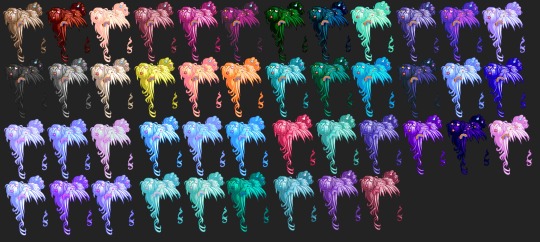
These are the last ones I think. I love the mint wig, it definitely deserves more versions.
8 notes
·
View notes
Note
pls recommend a true beginners first crochet project
I really like washcloths because they're small and you can start with a single crochet stitch and work your way from there. Cotton yarn is pretty cheap too, though it isn't stretchy. If you're struggling too much with cotton, blanket squares are another option that can use any yarn.
This tutorial has good pictures.
What I did to learn each crochet stitch was use wikihow because each step is in gif form. Videos were too fast for me and still images didn't make sense. They have guides for everything from making a chain to more complicated ways of starting a project like Magic Loop.
#you can also get white or natural cotton yarn for this#and learn dyework while you're at it!#pro chemical and dye has good samplers that have the basics in small jars
28 notes
·
View notes
Text

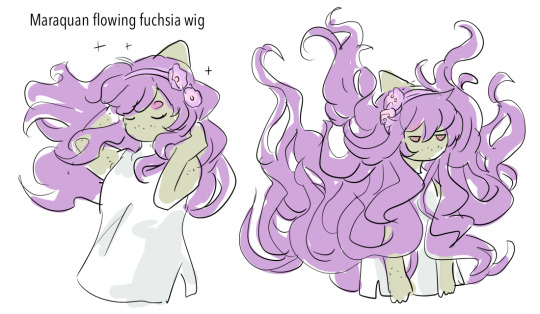

Ira vs the NC Mall
expectations vs reality
Been looking at customization w a friend recently and neo's had some great items the past few months but... why are nearly all mara clothes wigs and dresses designed for upright humanoid pets
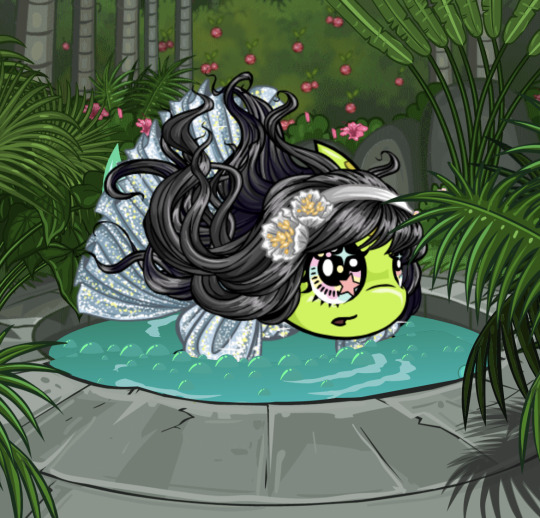
'please save your money'
11 notes
·
View notes
Text
Eriophora Dyeworks traded goods and favors with a number of herders locally and in the sister cities to have raw materials on which to use their dyes. Of course, there were the heritage breeds of sheep, the llama and alpaca herds that peered at them from small faces on periscope necks when the dye makers came to visit, even the tranquil domestic unicorns with their spinnable manes and tails. More precious for their rarity were the people who kept vegetable lambs and spun their ovine cotton, or the otherwise eerily motionless keepers of spiders, whose fingers constantly rolled like they were pulling up a single strand of steel-strong silk from some industrious arachnid just out of the uneasy visitor's sight.
2 notes
·
View notes
Text
Normally I don't have those wierd impulses with dye, but omfg this particular color looks so much like koolaid I had to keep telling myself not to take a swig
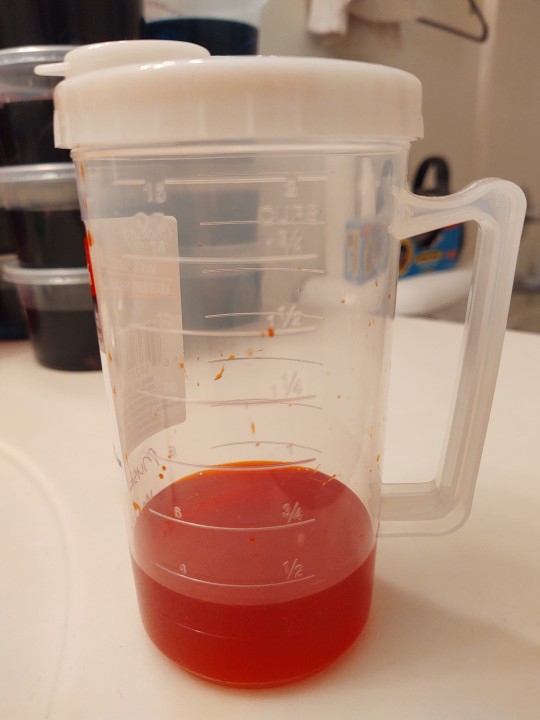
3 notes
·
View notes
Photo
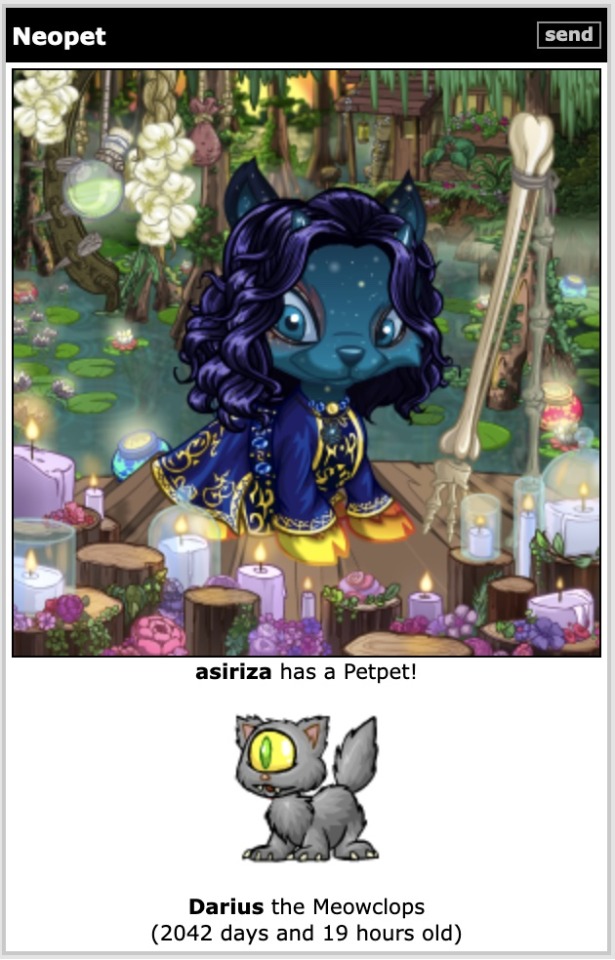
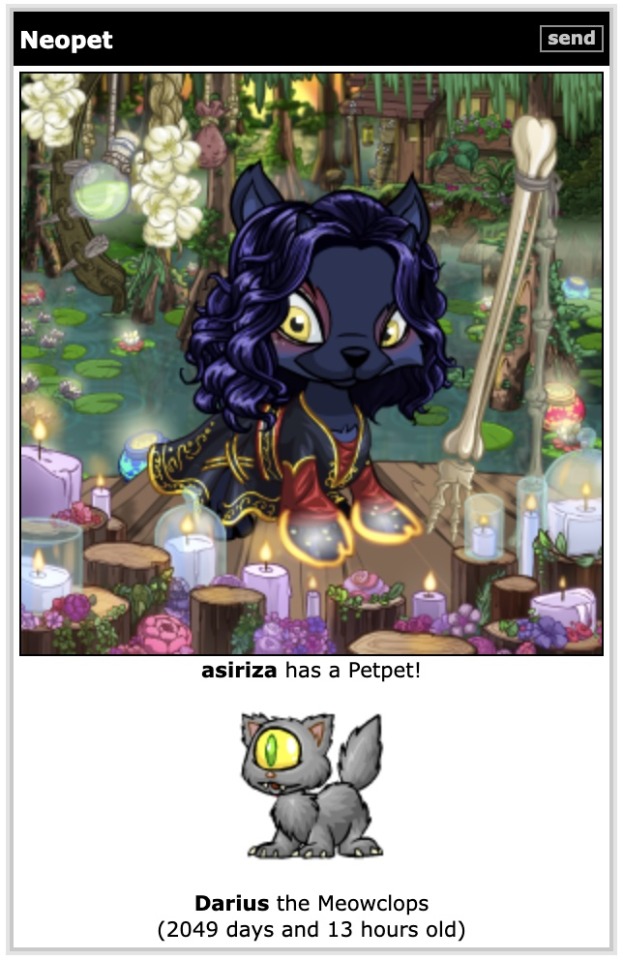
I’ve finally got asiriza to what I think is just the right paint/custom- she’s probably had the most (deliberately chosen) colours of any of my pets, going from red to magma to eventide to finally stealthy.
#also thank god armin collectors contacts got a dyeworks treatment and put easily avavailable good contacts on the trade market ;-;#neotag
4 notes
·
View notes
Text

OMG ARE YOU KIDDING ME
I pointed this item out to my friend and said, "I want this one" and decided on pulling 3 accessories & 3 trinkets/backgrounds, then on my 3rd accessory pull got the exact item I wanted
ALWAYS GAMBLE, KIDS! IT ALWAYS PAYS OFF!
1 note
·
View note
Text
“Decomposers and Detritivores”
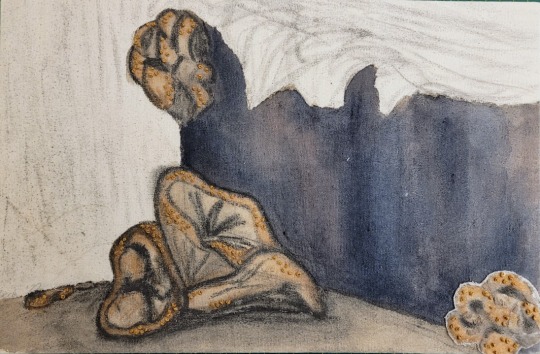

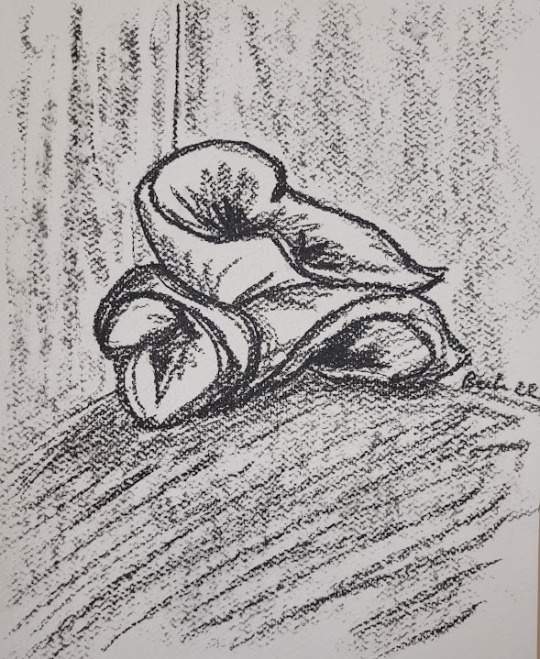
This past year for one of my final projects I combined dyework, drawing, and embroidery. This piece is directly inspired by mushrooms that were growing in a stairwell in my school, fitting with this years pieces that were all inspired by the places that I consider home.
My design process starts with drawing, so it seemed right to highlight that in one of my final pieces, while utilizing natural dyes as paint. I began by compiling my photos of the mushrooms and doing gesture drawings and studies of them in graphite, which is also what I used on the finished piece. The natural dyes I used were bought from Maiwa, including logwood, walnut, and cutch. The piece is entirely silk, the fabric is silk noile that I stretched onto a frame and the embroidery threads are both cultivated silk and silk noile.
(hopefully tumblr doesn’t eat the image quality too much -_-).
#art#disabled artist#textiles#textile art#embroidery#drawing#dyes#natural dyes#natural dye#dyework#mushrooms#silk#silk embroidery#my art
0 notes
Text

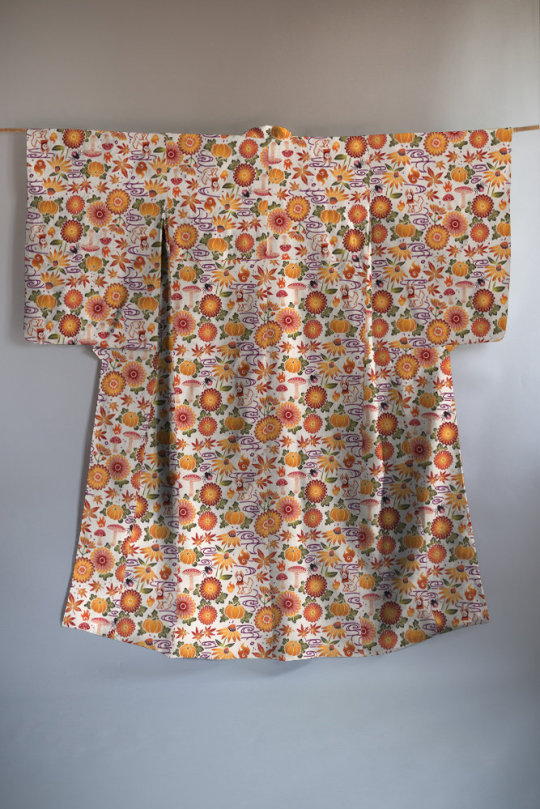
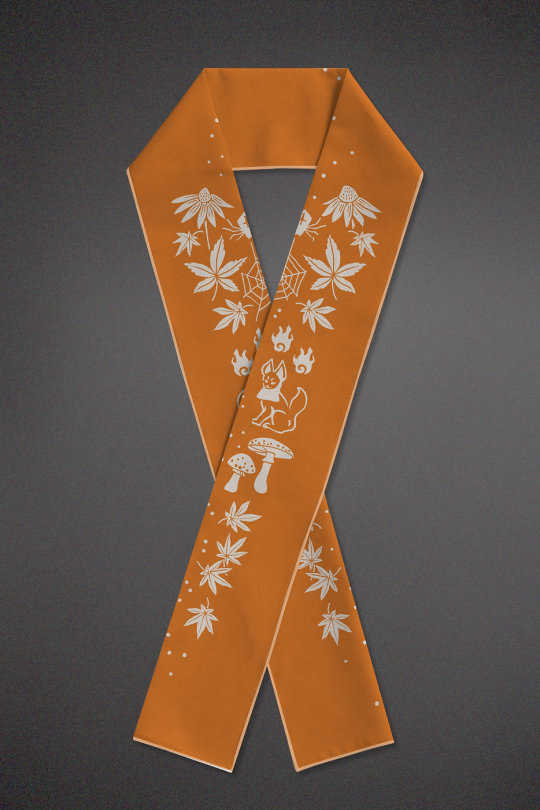

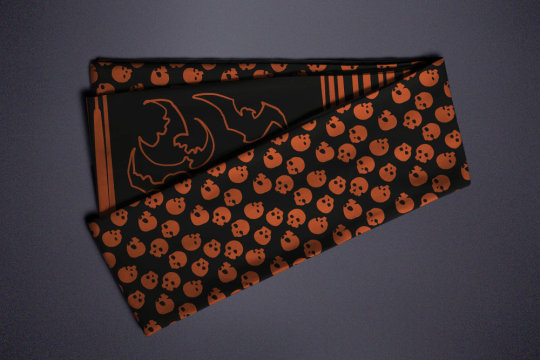
"Autumn mood" kimono items collection by 3magpies studio, featuring among other things a pumpkin hanhaba obi, a kimono with hidden foxes, a haneri with maple leaves+mushrooms+foxes+spiderweb, a mushrooms colllection hanhaba obi, a skulls+bats halloweeny hanhaba obi.
I love the hidden foxes kimono with its white ground and bright coloring similar to Ryukyuan bingata dyework <3
#japan#fashion#kimono#obi#modern kimono#3magpies studio#autumn in japan#pumpkin#kabocha#fox#kistune#kinoko#mushroom#skull#dokuro#bat#koumori#komori#halloween#着物#帯
418 notes
·
View notes
Note
I was noticing people mentioning in asks that they've taken up embroidery, etc from reading your fics and being inspired In that vein: count me in that number now!
I have gotten way more interested and active about making bread from scratch, sourdough, grinding my own flour etc. I could already bake but I hadn't been bothering for years. Reading about Lamb and Julita got me back into it.
Also, fiber arts and dyeing: Lambert in MBTT with his dyeworks experiments inspired me to get some books on dyeing your own skeins and I'm planting some dye plants in my garden this year. Starting with Coreopsis, Calendula, Yarrow, and maybe some acorn experiments with our nearby Oak. So mostly yellows/browns/maybe greys... I'm still working on getting ahold of seeds and making a space for madder and woad. But it has been bringing my latent inner chemistry nerd a lot of joy!
So thank you, your fics bring both comfort re-reads AND more involvement with new hobbies!
That is all amazingly cool and I am delighted to have helped inspire you to pick those hobbies back up! You'll have to let me know how the dyeing experiments work out!
60 notes
·
View notes
Text



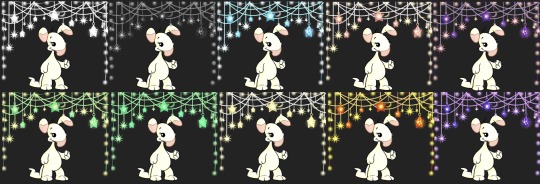

This year I did a bunch of dyeworks tests for items. What do you guys think? That full moon bg really needs some dyeworks
3 notes
·
View notes
Note
i asked my dad to buy me 3 things from he store and he got two wrong???
he is now going back to the store to get the right ones but how do u mess up that much he didnt even have to buy anything else except for toilet paper i am PUZZLED
How??? Yesterday I sent my husband to the store to pick up a gallon of paint, and he brought back TWO gallons and one of them was a color I didn't even need yet. At least he got the right color as well lol!
16 notes
·
View notes
Text
One more thing today...
Finished the slouchy beanie! It has mistakes, but this was my first foray into Magic Loop, so perfection was not expected.
Really loved the gradient on this. Yarn is from The Blue Brick Dyeworks in colorway The City of Grand Rapids. Not what I had originally planned, but the stash needed destashing. Spawn found a friend to take the finished product off my hands.
Look! I made room in the closet for more fiber! Mwahahhaha...


49 notes
·
View notes
Text
Just some highlights (yes, literally) of the dyework layers that go into my masks. Enjoy!
24 notes
·
View notes
Note
I know you guys aren't the blog for this, but you've demonstrated that you know this stuff, so I'm going to ask and if what I get is pointed in hopefully the right direction, I'll be happy with that. I'm trying to make some fantasy countries, as one does, and I know roughly how big they all are in terms of military / technology power, natural resources, and how livable they are.
What I don't have is uh, any understanding of how to guesstimate the population needed to support their various economies. I don't need exact numbers, I more or less need to know if this many cities and small towns and villages are enough (I am also making rough maps of each kingdom) and roughly what percentages of the population need to be dedicated to each thing like spinning/dyeworking and agriculture and transportation and stuff.
Can you guys help at all? And if not, can you help maybe get me pointed in a direction that might help? ^^;
So, basically, you have four choices.
The first is, legitimately, to just kind of say, you're not overly worried about it, and to fudge out some numbers that look roughly consistent with what you want, and then not worry about the rest. This option is a lot more flexible (and effective) than it first sounds, because you can make vague statements without direct demographic data, and trust the math to work out in the wash. For example, I remember a question awhile back where they wanted an elite core of magic using knights, and a large part of the answer to how large that nation would need to be came down to looking at the number of knights in the organization and holding that against how common they were.
For a more direct example, you can say, “The Empire is supported by a vast agricultural infrastructure in The Western Valleys,” and it's generally unimpeachable unless you start trying presenting hard numbers. (If you defining the exact size of The Western Valleys, then that can give someone enough information to start to realize, “wait, this math doesn't check out.”) If you never specifically define how large that region is, it becomes a kind of Schroedinger's state, it is exactly the size it needs to be. You can even push this further by indicating things like production shifts via percentages. Without context, a percentage is a meaningless number. If grain production is down by 5% this year, the audience doesn't know what that exact number looks like. This also works with non-standard weights and measures, I'm not a fan of this fantasy cliché, but it is an effective way to pave over uncertain numbers, while sounding like the characters are producing hard demographics.
Even in the specific agricultural example above, knowing the space is, won't fully convey how much is being produced. That also depends on how much of the space can be used effectively. “Valleys,” could indicate a few wide, highly fertile, flood planes, or it could refer to a vast network of smaller farms filling a tight network of canyons.
Your second option, and honestly, my recommendation, would be to look for historical analogs. We have somewhat accurate demographic data for human settlements throughout history, (granted, sometimes that is just estimating by the thousands), and that information can be found pretty painlessly by searching around online. The technical term for this field is Archaeological Demography. (This used to be called Demographic Archaeology. You may still find that term in use.)
This is going to run you into a few details that are easy to miss. The geographic size of nations prior to The Treaty of Westphalia (1648), were a lot smaller than what you see today. A legitimate problem with a lot of fantasy authors is “importing,” the concept of a modern nation, into an era when those simply didn't exist. In fact, in a pre-modern setting, it's not unreasonable to have a map comprised almost exclusively of city-states who control some outlying settlements, but aren't really, “nations,” in the way we think of them. Granted, you may also have feudal states that controlled larger swaths of territory, by delegating authority to a hierarchy of nobility. Though feudal states did tend to be far more fragile, and prone to, “breakage,” whenever the sovereign's vassals decided to place their ambitions above their loyalty. Similarly, there were imperial states, though, again, these tended to be a lot more fragile than the term implies.
A third option would be to look at other fantasy settings, and then spitball a number based on their numbers. This does have some serious risks. First, no, don't copy their numbers verbatim, and second when you are looking at their numbers, it's important to consider if they seem plausible. There are a lot of authors who take the first route I suggested. They'll spout off something like a large city having a population of half-a-million people, when that would represent a significant portion of the global population, without realizing that this would (probably) make it the largest city in the world.
In general, it's a good idea to look at what other authors are doing, and file that away for future reference. In this case, it may be worth skimming for demographics, and seeing if someone else had an idea.
This is going to sound like a non-sequitur, but, when you're doing any kind of lit review (or, really, reading anything), it's very important to check the background of the author. “Who wrote this?” Often, simply skimming their biography will be enough to inform what you're looking at. This will then help you to determine what you should, and shouldn't, take seriously, when you're reading. Granted, outside of authors with a background in sociology or history, you're not like to get a lot of millage out of this when you're researching fantasy authors, but is an important research tool, and one that you don't want to forget.
The fourth, and final option, is going to be a lot of work. If you enjoy this, don't let me discourage you, however, in the vast majority of cases, this will be extreme overkill. Start with the agriculture. Specifically food production, with an eye towards how much food can be produced and brought to market. This is going to be the most foundational part of your fictional states, and their access to agricultural resources is what determines how large they can be.
Establishing the caloric productivity of your farmers will be highly variable, based on things like soil fertility and agricultural technologies in use. (This is also where the numbers, in a fantasy setting, can go right out the window. Fantastic technologies, or magical crop manipulation (Agrimages?) can create situations where you cannot work out the math in any reasonable way.) Again, you can use historical analogs to get a feel for where this should be, and can fudge it to a reasonable point where it's not possible to fully debunk the math. There is scholarly lit (particularly in archaeology) regarding real world agricultural production in a wide variety of environments and at different eras in history.
Once you have a meaningful number for your agricultural production, you can start working out the rest of your civilization. You can take caloric production and compare that to how much food your civilization's laborers need to consume to be productive. You can determine how much food is available for more specialized jobs. You can start to get a feel for how large a standing military force can be maintained. (Hint: if you're looking at pre-modern eras then chances are: Not many.)
If the food production is tight, then you have a recipe for an aggressive and expansionist power, looking to expand their territory. If they're producing more food than they need, it's likely they'll export food in exchange for other goods. High food production can also result in a population boom.
When it comes to dedicated roles, you're going to guesstimate their productivity, to then compare that to how many you'd need to (roughly) satisfy the needs of the rest of the population. Production of trade goods and metal mining can be a little tricky in this case, as there's no (practical) limit on how much the society can produce and export.
So far as it goes, transport is a factor, and that will heavily affect how civilization looks. Easy access to transport allows for larger, more sprawling, nations (with more complicated ruling structures.) In particular, river access can be a major boon for moving large amounts of trade goods (and food) around quickly.
Conversely, rough terrain, where it's difficult to transport goods between settlements, will have a far more decentralized, and scattered governance and production. Even agricultural production would need to be much closer to the settlements that benefited from it. Rough terrain could also, easily, impair state capacity. Making it significantly harder for the nation to deal with bandits or even enforcing the laws. The trade-off is that rough terrain is likely to be associated with mineral wealth, so a nation may be willing to deal with the difficulties associated with territory like this specifically because of regional mining. This could be valuable metals like gold or silver, it could be strategic metals like iron or copper and tin (bronze is a copper/tin alloy), or it could be something more exotic and exclusive to your setting. While it would be somewhat unusual, it's also possible that you'd see stone or marble quarries. Usually, you wouldn't want to have to transport stone over long distances, but it might be the best available option.
Of these four options, the best approach is going to be whatever best fits your needs. Most stories are not going to require, (or benefit from) precise demographics. You don't need to know how many weavers are in the capital city of your nation, unless it's somehow critically important to the plot.
If your story revolves around the detailed management and logistics of running a nation, then, yes this kind of information may be important, and you would need to spend the time artificially reconstructing the fantasy demographics for your entire civilization. At which point the fourth option might be a reasonable expenditure of time, along with a crash course in archaeological demography.
If your story is a more conventional fantasy narrative, then that information becomes far less useful, to the point that fudging the numbers (the first option) becomes entirely viable, so long as you're reasonably consistent. Especially if you don't try to fill in every blank.
On a sliding scale between these points, you should be able to find the approach that best fits the needs of your story. Don't worry about the exact numbers unless it is critically important to understanding the plot. Though, obviously, the more politically or economically focused your story is, the more important these numbers become.
-Starke
This blog is supported through Patreon. Patrons get early access to new posts, and direct access through Discord. If you’d like to support us, please consider becoming a Patron.
234 notes
·
View notes
Photo
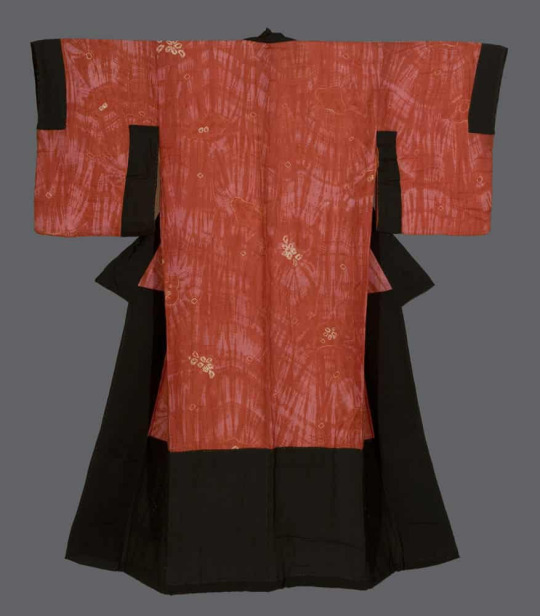

Dounuki
Late Meiji (1890-1912)
This silk inner antique kimono features masterful and sophisticated shibori dyework within the main bodice section.
93 notes
·
View notes